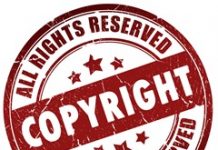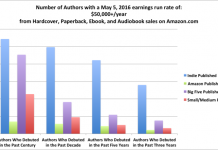
Great piece. And one that warrants a solid response, which I will think on before I write anything else:
So when digital evangelists prognosticate about the future of publishing, as they love to do, and about what ‘needs’ to go away, serious nonfiction is now one of the first things I think about. Maybe it’s because I’m getting older and want to read more of it and notice twentysomethings have little perceived patience for weighty tomes. Maybe it’s because I’d rather have pragmatic conversations about what categories are best suited to digital — genre fiction obviously, certain commercial strains of literary fiction, basically any book that needs to have a completed manuscript done before it’s shopped around, or can be finished very quickly post-proposal — and which ones won’t be. Maybe it’s because the very institutions that support serious nonfiction are themselves in more financial trouble than they used to be.
via Serious Nonfiction in the Digital Age.
(Via Eoin Purcell’s Blog.)


































Pity this SARAH WEINMAN doesn’t allow people to comment on her blog …… whatever……
As a non publishing insider it seems to me that it is self evidently obvious that there is a fundamental difference between mainly text based publishing – and publishing that involves a high percentage or even a critical percentage of images, illustration, photos, diagrams etc. – that the general discussion that goes on on the web on the topic of digital reading and publishing cannot be applied willy nilly to both sections of he industry.
So the writers apparent point seems to me to be rather superfluous and actually I am not really sure what point she is trying to make.
The first point in her piece refers to the issue of 20 year olds not have staying power for long tomes. I don’t believe this for a moment. They will read when the topic interests them. The issue to finding what interests them, not knocking their staying power.
The general subject of serious non fiction, that is image intensive, has come up many times before and when it has, most people have opined that the paper product will last well into the transition period to digital, long after paper novels and text intensive titles start to disappear. It seems obvious to me that this is true.
I am not sure what else she is saying. The iPad seems to me to be well suited to this category. All that is needed is a format that copes with the image intensive environment. It seems that some of the existing formats used for text intensive titles may not do so very well, but it’s not rocket science to deliver one that works. Html5 would work very well for example.
People have a general tendency to predict the future using parameters from the present. I’m always telling my son that you have to extend current trends forward when thinking about the future.
So this lady is talking about the future of ebooks but framing the argument using current technology. A few years ago we didn’t have any tablets or eReaders. Now we have cheap eInk devices and amazing high-resolution tablets. A few years from now we will have even cheaper and more capable devices. Folding tablets or integrated tablet/phones or text projection in our eye-glasses or many other things that we can’t imagine now.
These articles are always written by people who are currently making a living from traditional publishing. They generally have limited insight into the digital world. It reminds me of the early days of digital photography when the mainstream film industry churned out endless articles about the limitations of digital and how there would always be a place for film.
This is the point that I have been making at the various Kindle and other E-reader sites. People wax rhapsodic about the $2.99 and even $.99 e-book but 98 percent of that stuff is genre fiction. Nothing wrong with genre fiction per se — I enjoy the occasional crime or science fiction novel myself. But for readers who are interested in history ans science the brave new self-published world is not all that exciting. I’m fine with paying $10-13 for a non-fiction e-book. What I resent is paying as much, if not more, as I would for the hardcover, which is often the case.